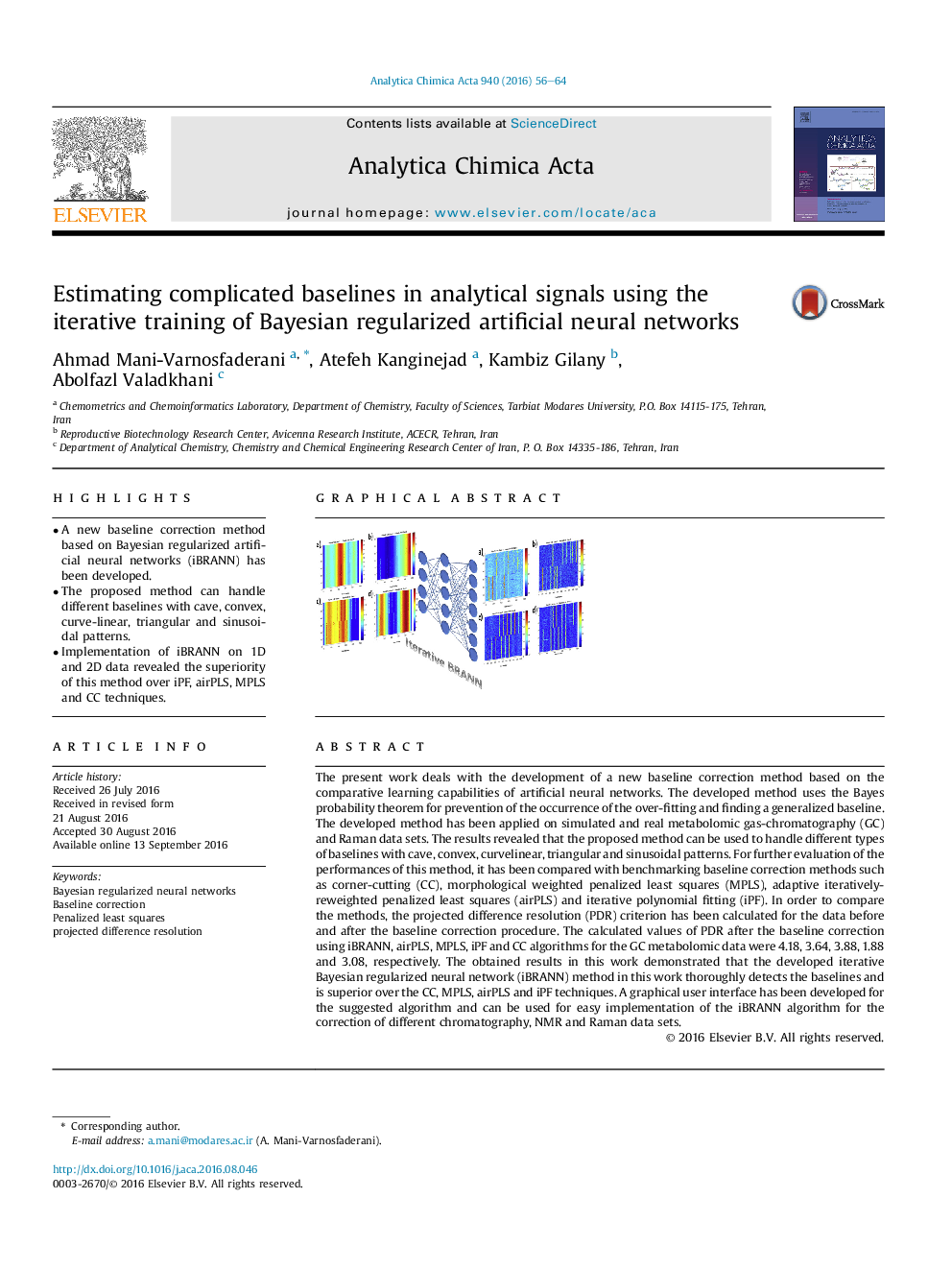| Article ID | Journal | Published Year | Pages | File Type |
|---|---|---|---|---|
| 5131253 | Analytica Chimica Acta | 2016 | 9 Pages |
â¢A new baseline correction method based on Bayesian regularized artificial neural networks (iBRANN) has been developed.â¢The proposed method can handle different baselines with cave, convex, curve-linear, triangular and sinusoidal patterns.â¢Implementation of iBRANN on 1D and 2D data revealed the superiority of this method over iPF, airPLS, MPLS and CC techniques.
The present work deals with the development of a new baseline correction method based on the comparative learning capabilities of artificial neural networks. The developed method uses the Bayes probability theorem for prevention of the occurrence of the over-fitting and finding a generalized baseline. The developed method has been applied on simulated and real metabolomic gas-chromatography (GC) and Raman data sets. The results revealed that the proposed method can be used to handle different types of baselines with cave, convex, curvelinear, triangular and sinusoidal patterns. For further evaluation of the performances of this method, it has been compared with benchmarking baseline correction methods such as corner-cutting (CC), morphological weighted penalized least squares (MPLS), adaptive iteratively-reweighted penalized least squares (airPLS) and iterative polynomial fitting (iPF). In order to compare the methods, the projected difference resolution (PDR) criterion has been calculated for the data before and after the baseline correction procedure. The calculated values of PDR after the baseline correction using iBRANN, airPLS, MPLS, iPF and CC algorithms for the GC metabolomic data were 4.18, 3.64, 3.88, 1.88 and 3.08, respectively. The obtained results in this work demonstrated that the developed iterative Bayesian regularized neural network (iBRANN) method in this work thoroughly detects the baselines and is superior over the CC, MPLS, airPLS and iPF techniques. A graphical user interface has been developed for the suggested algorithm and can be used for easy implementation of the iBRANN algorithm for the correction of different chromatography, NMR and Raman data sets.
Graphical abstractDownload full-size image
